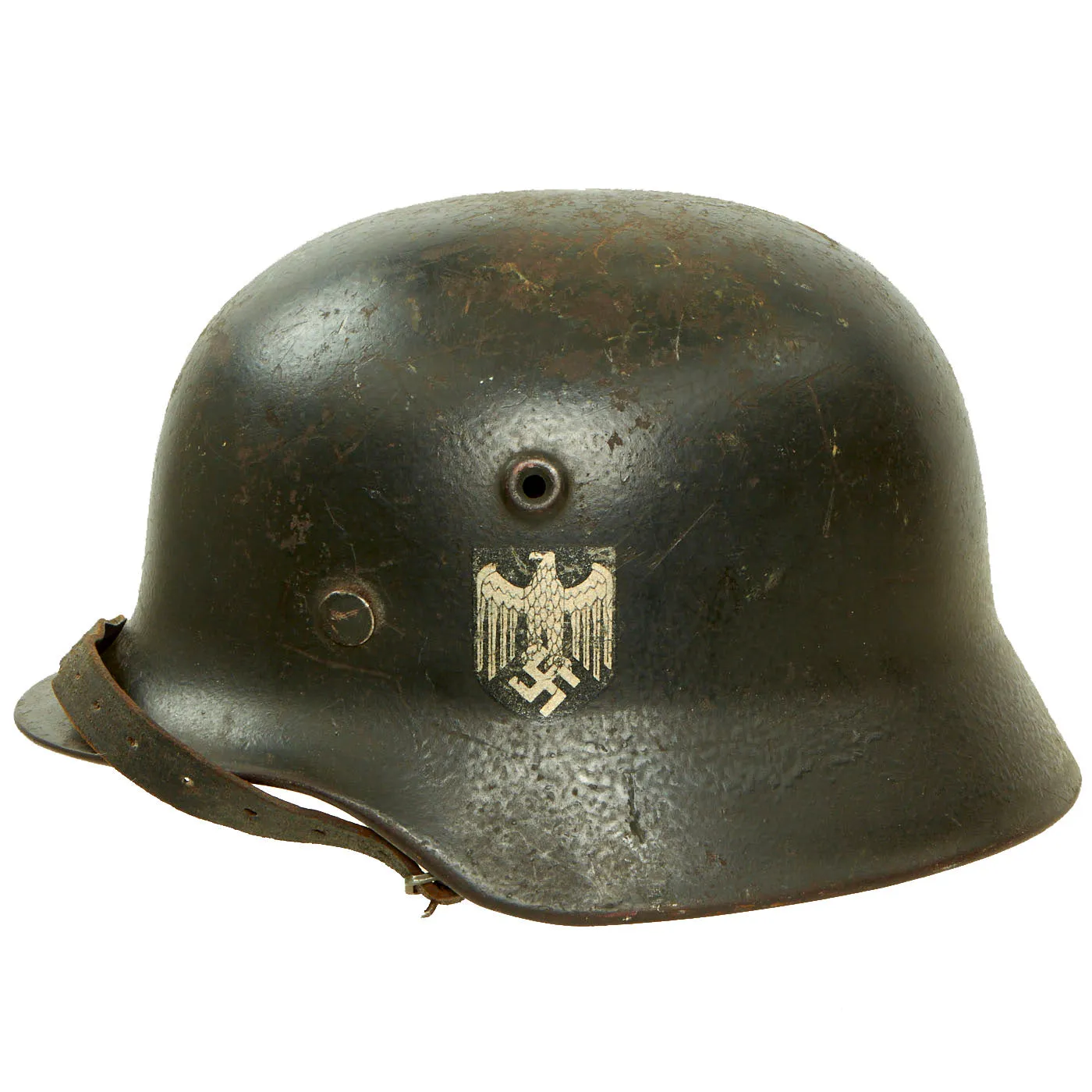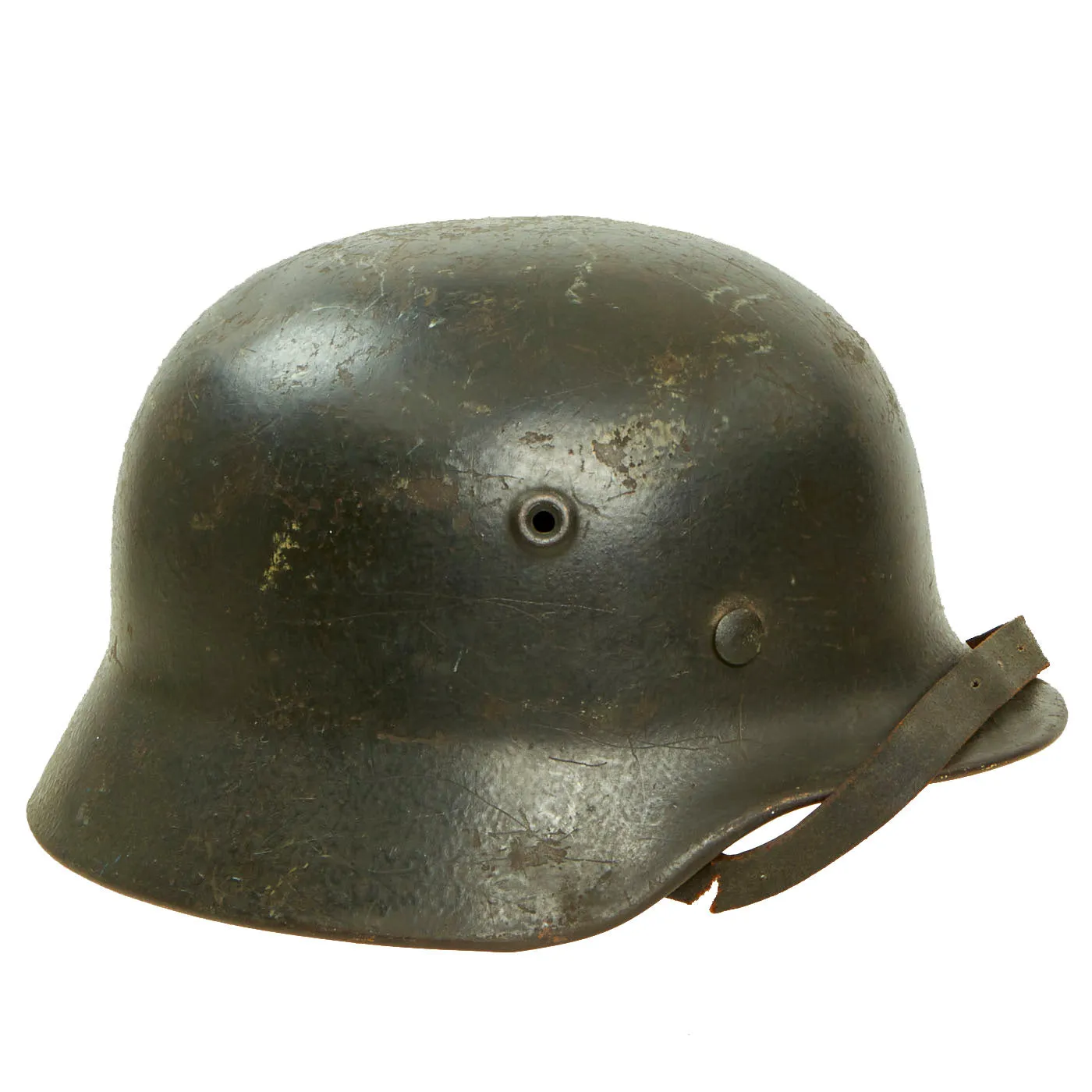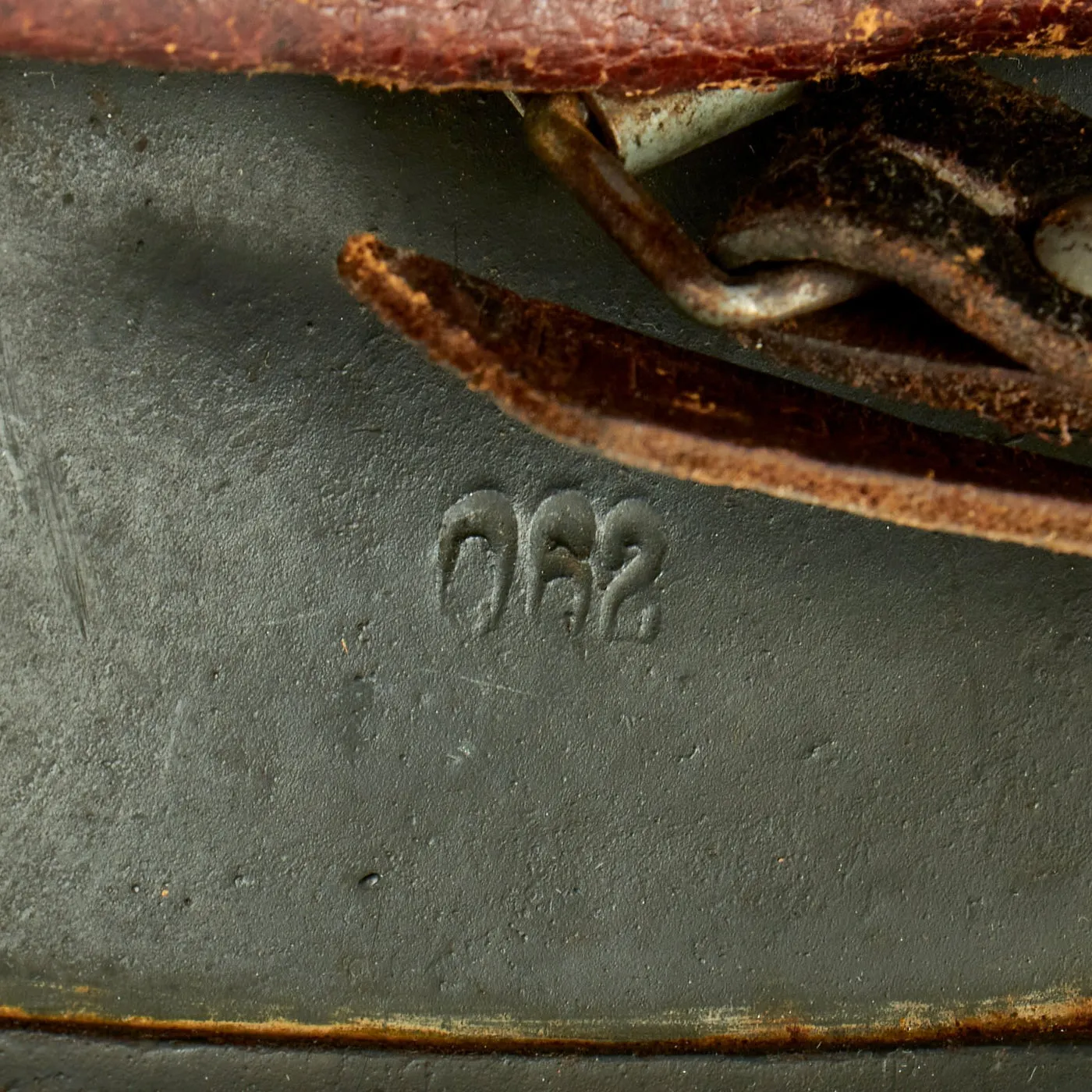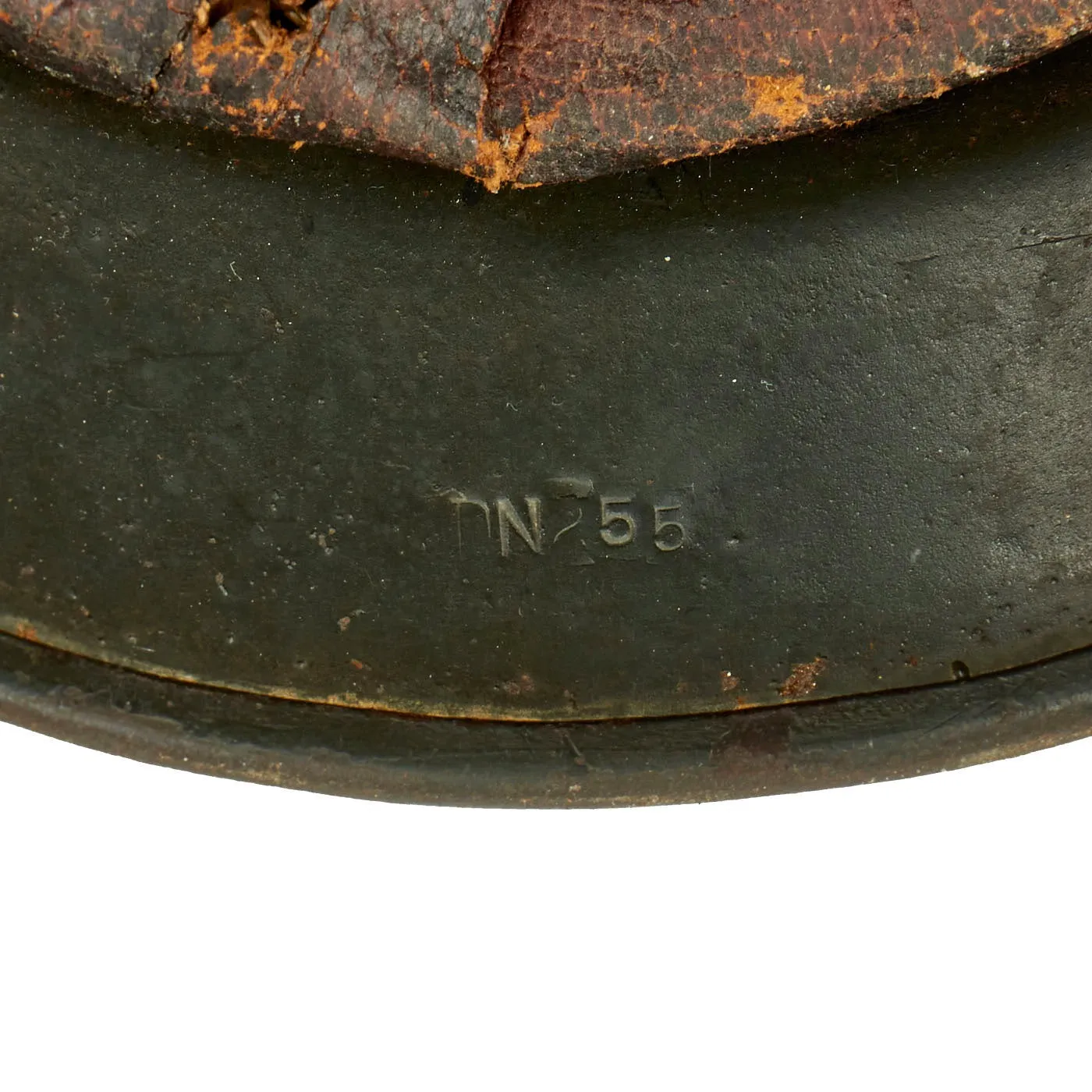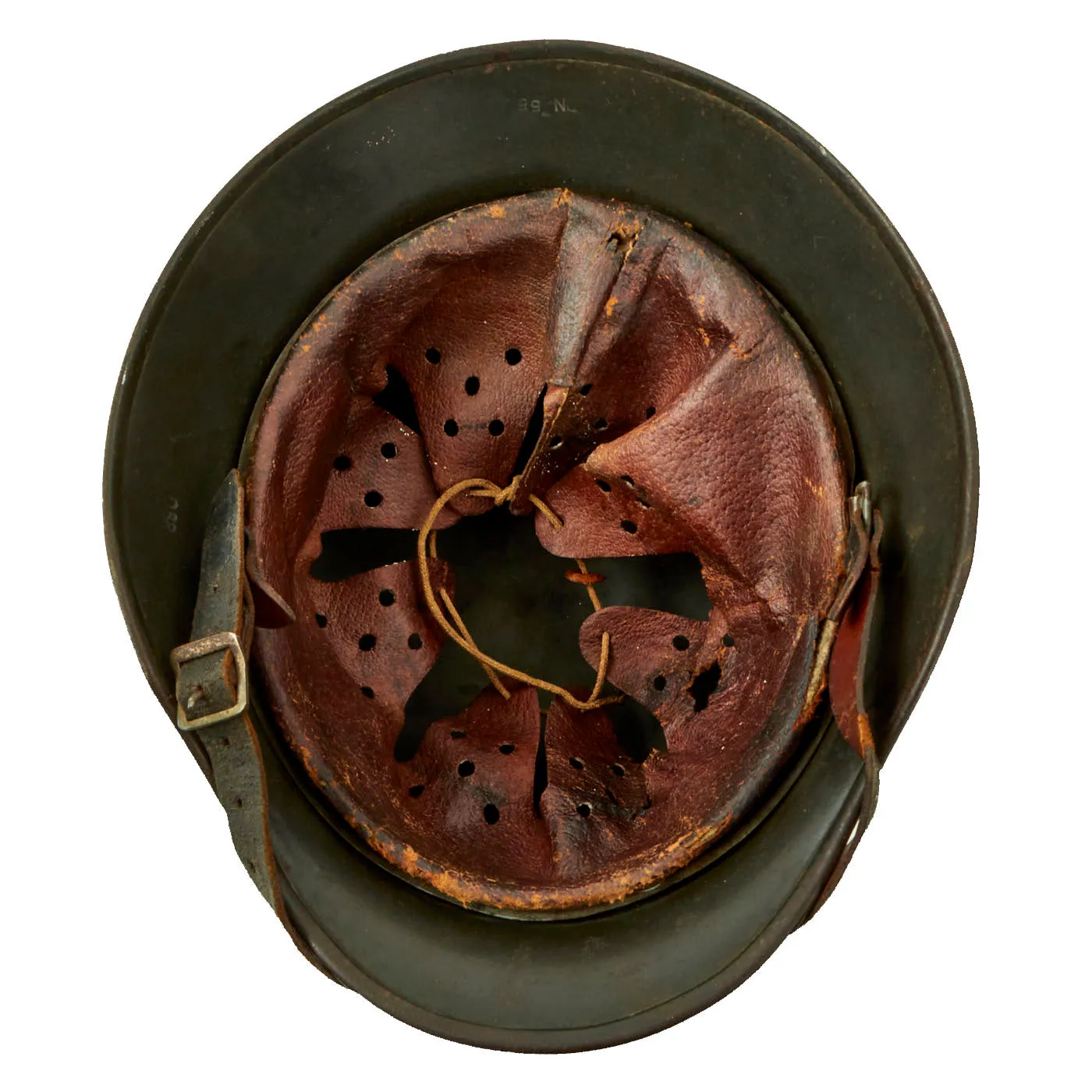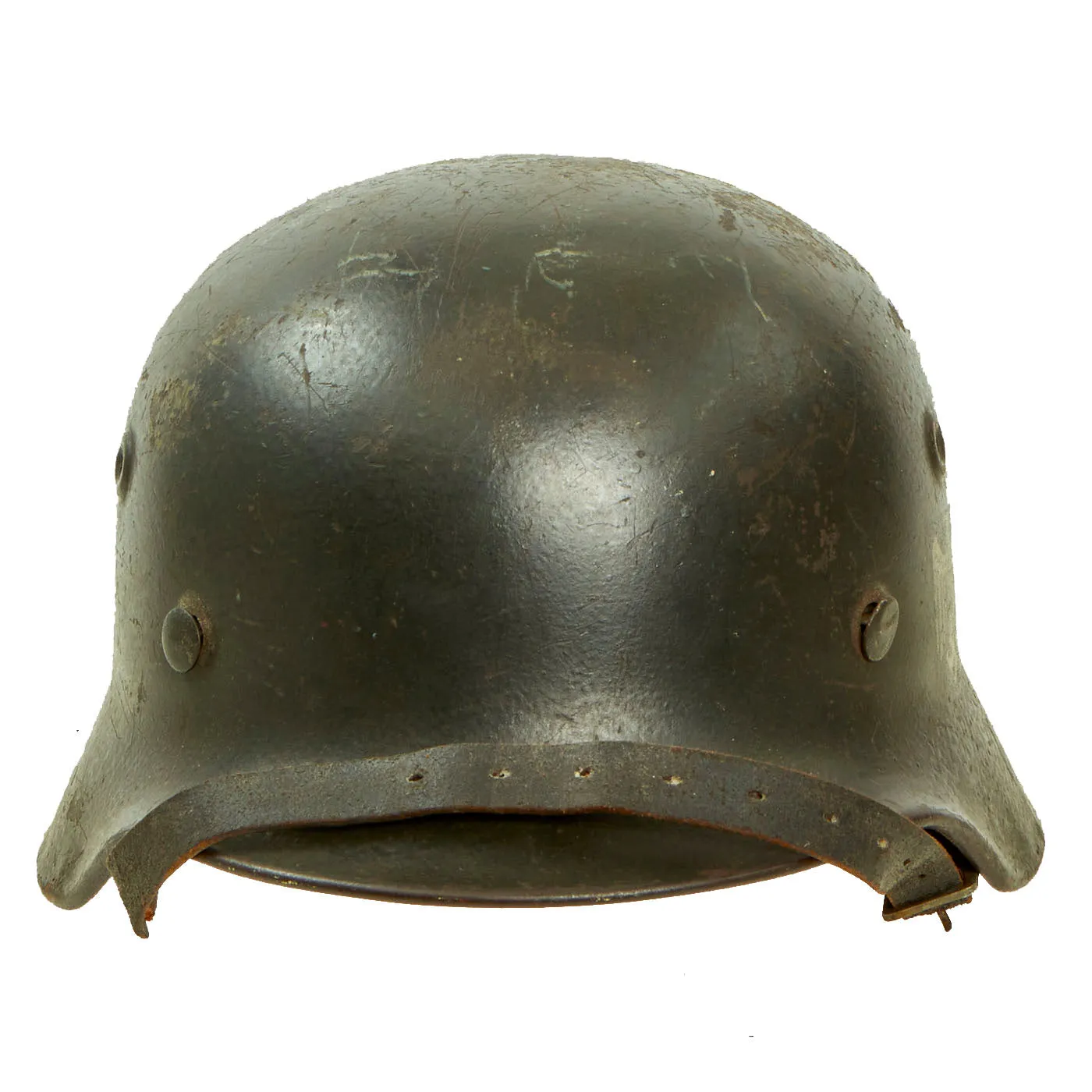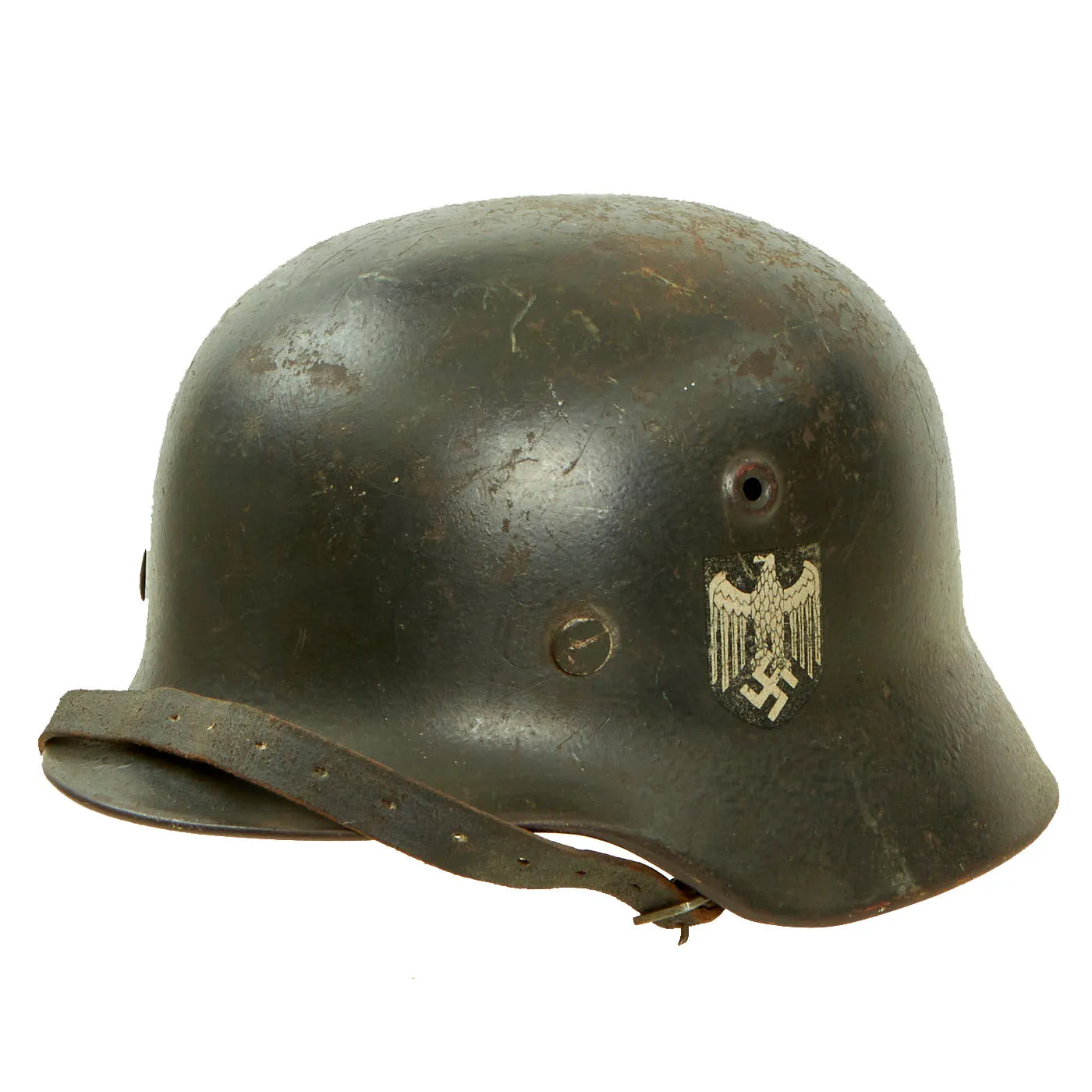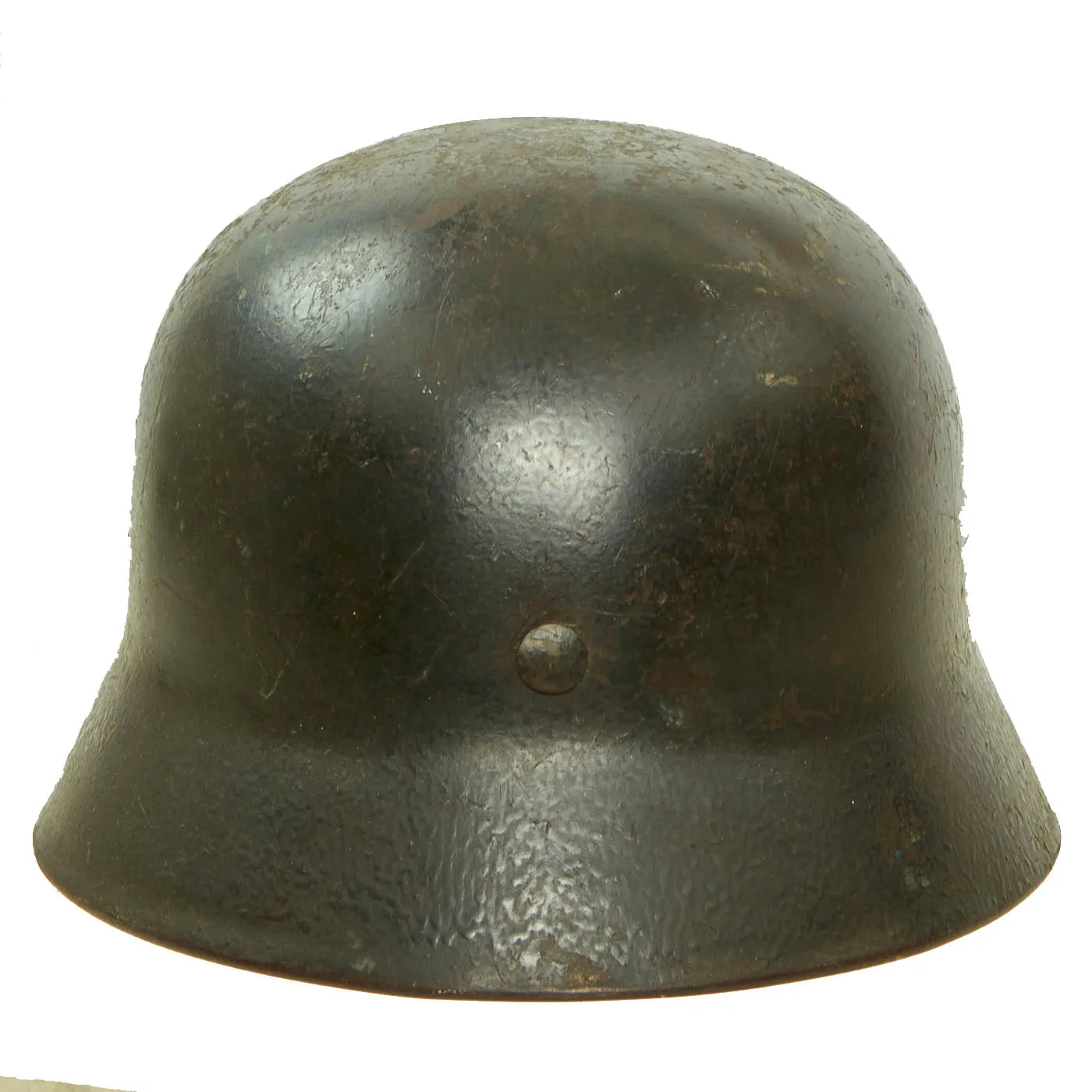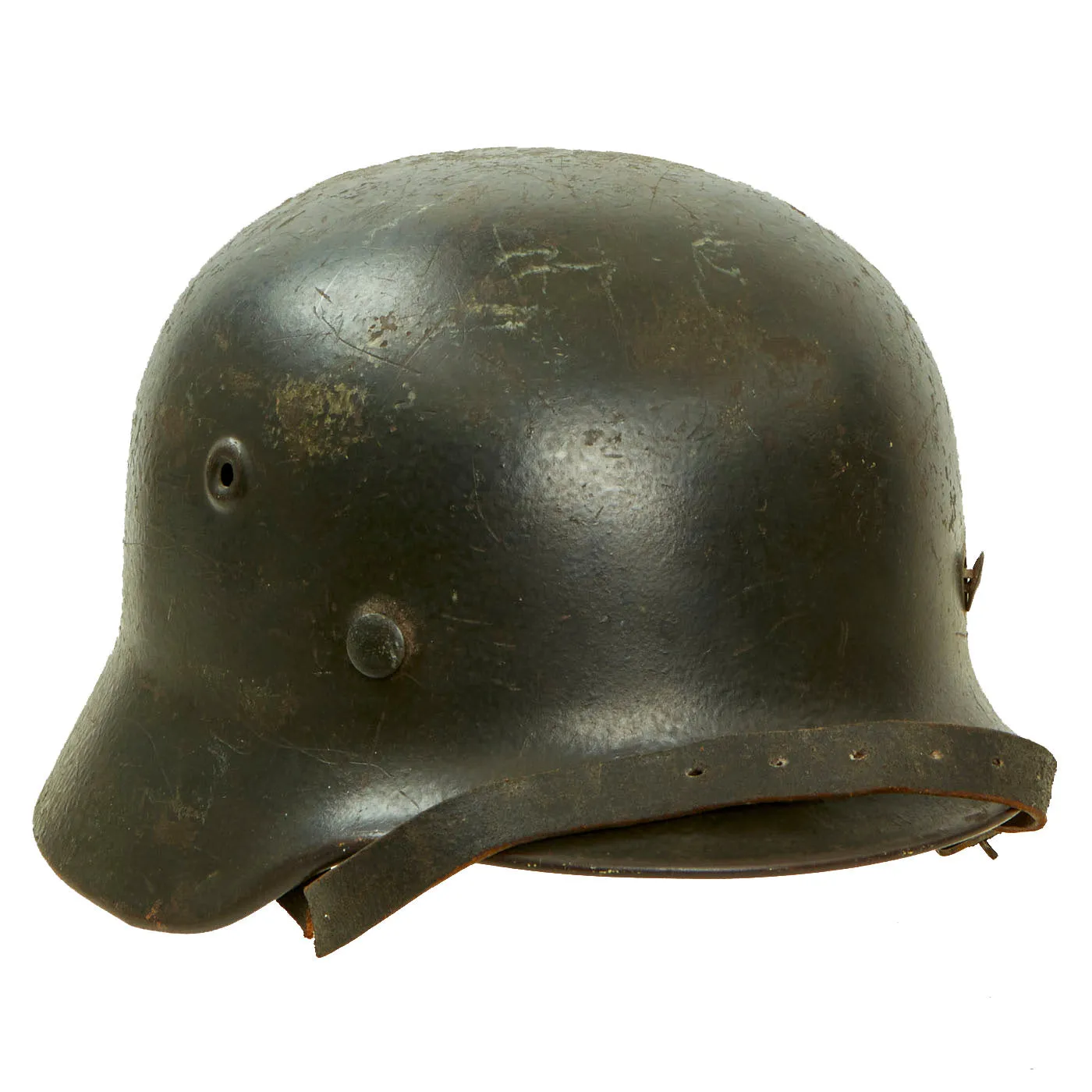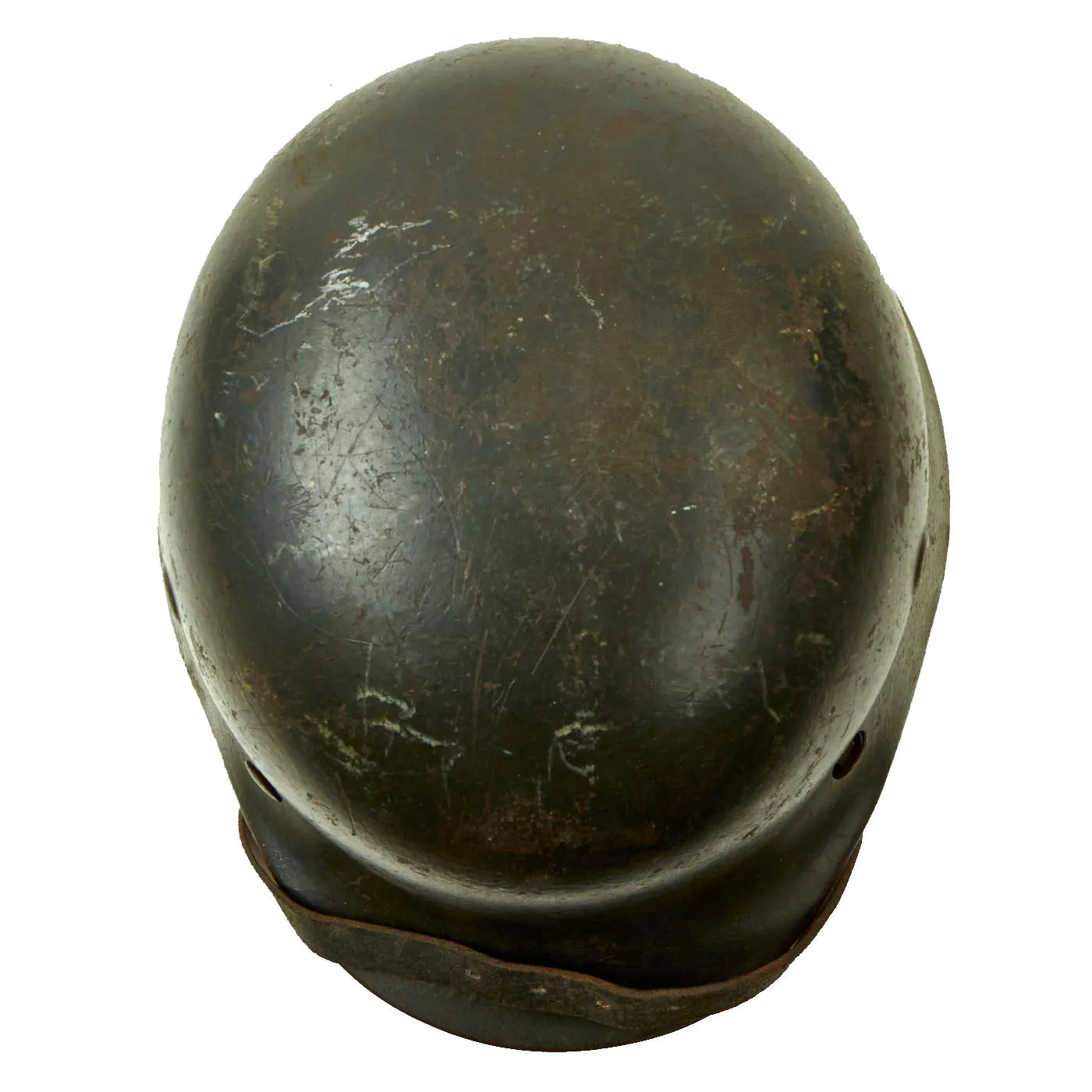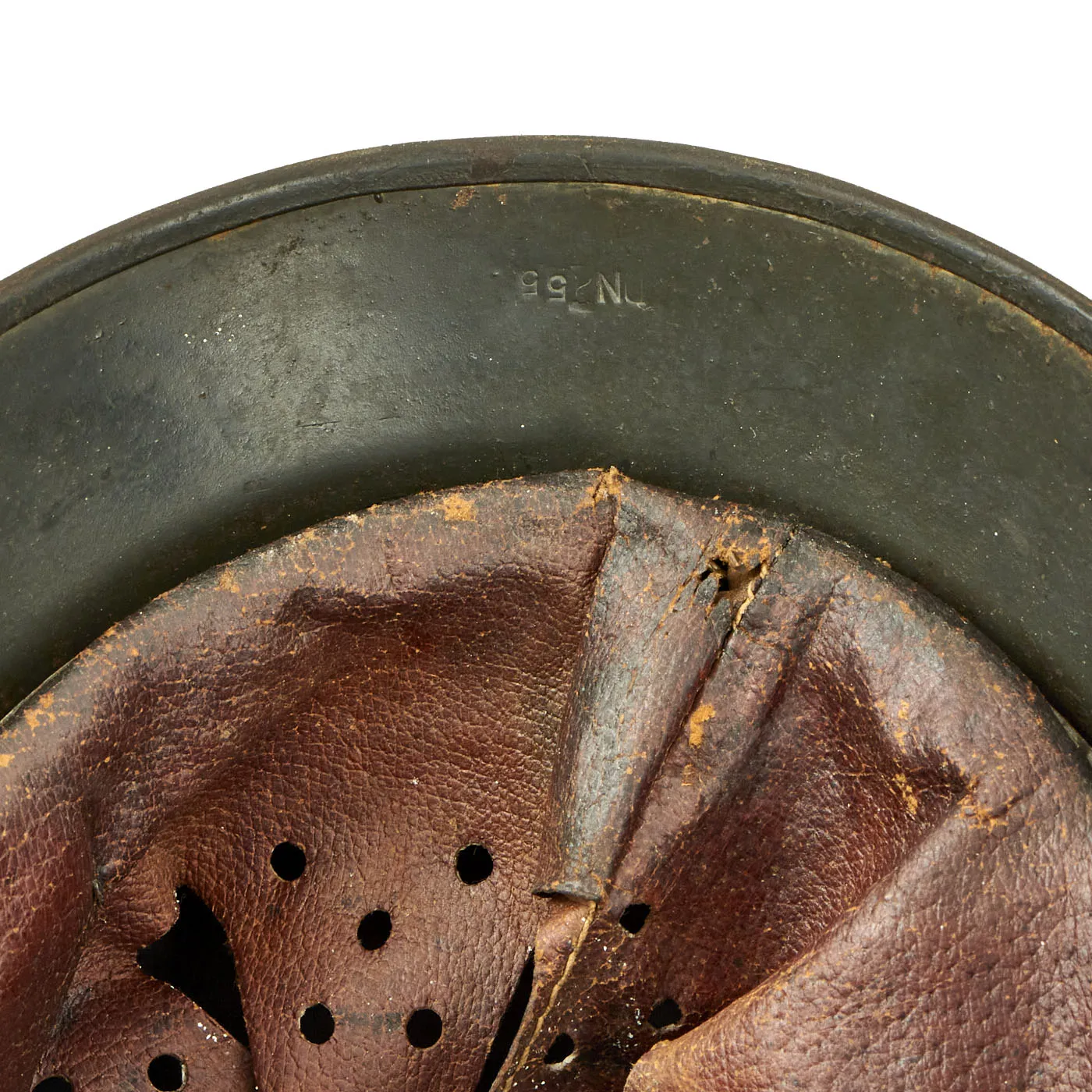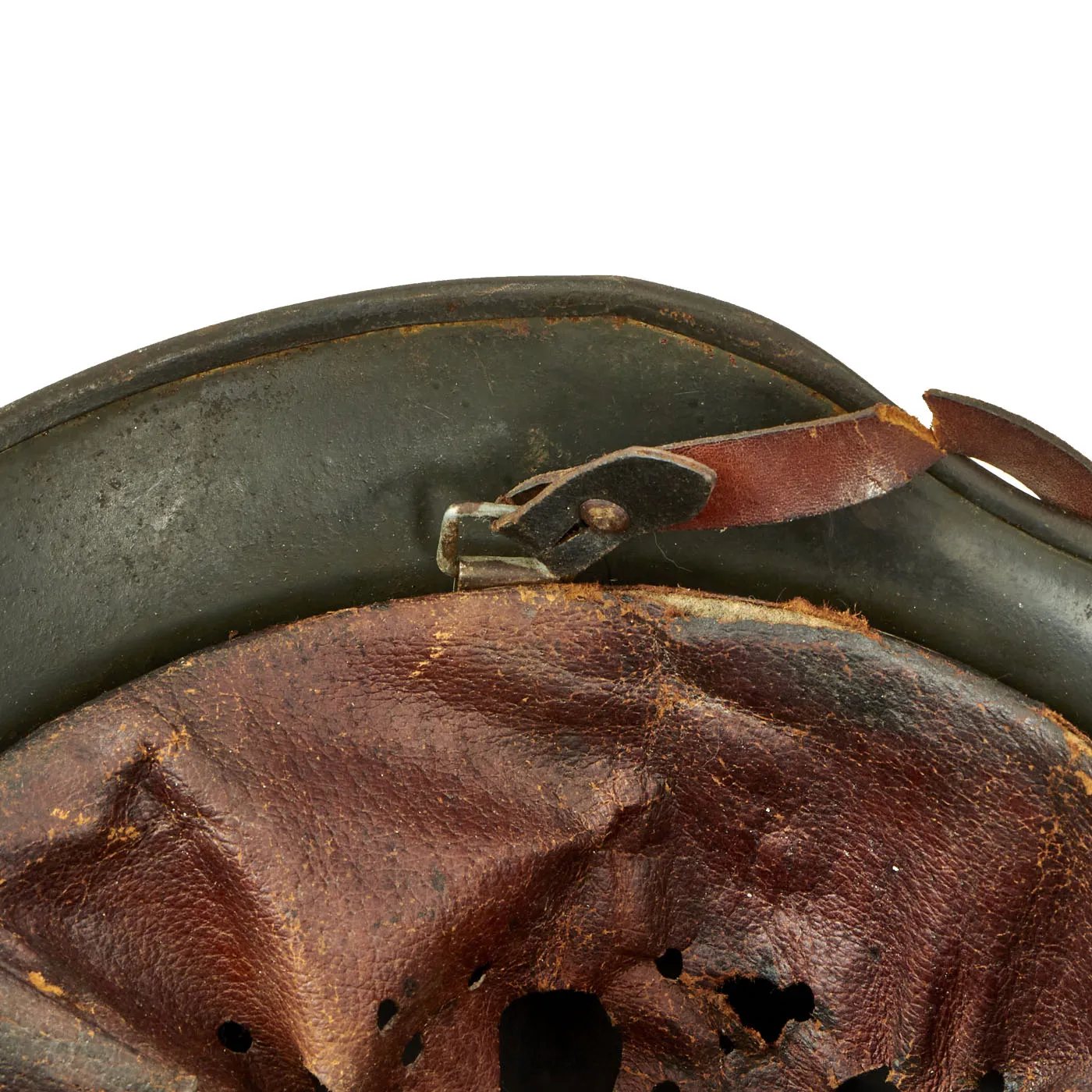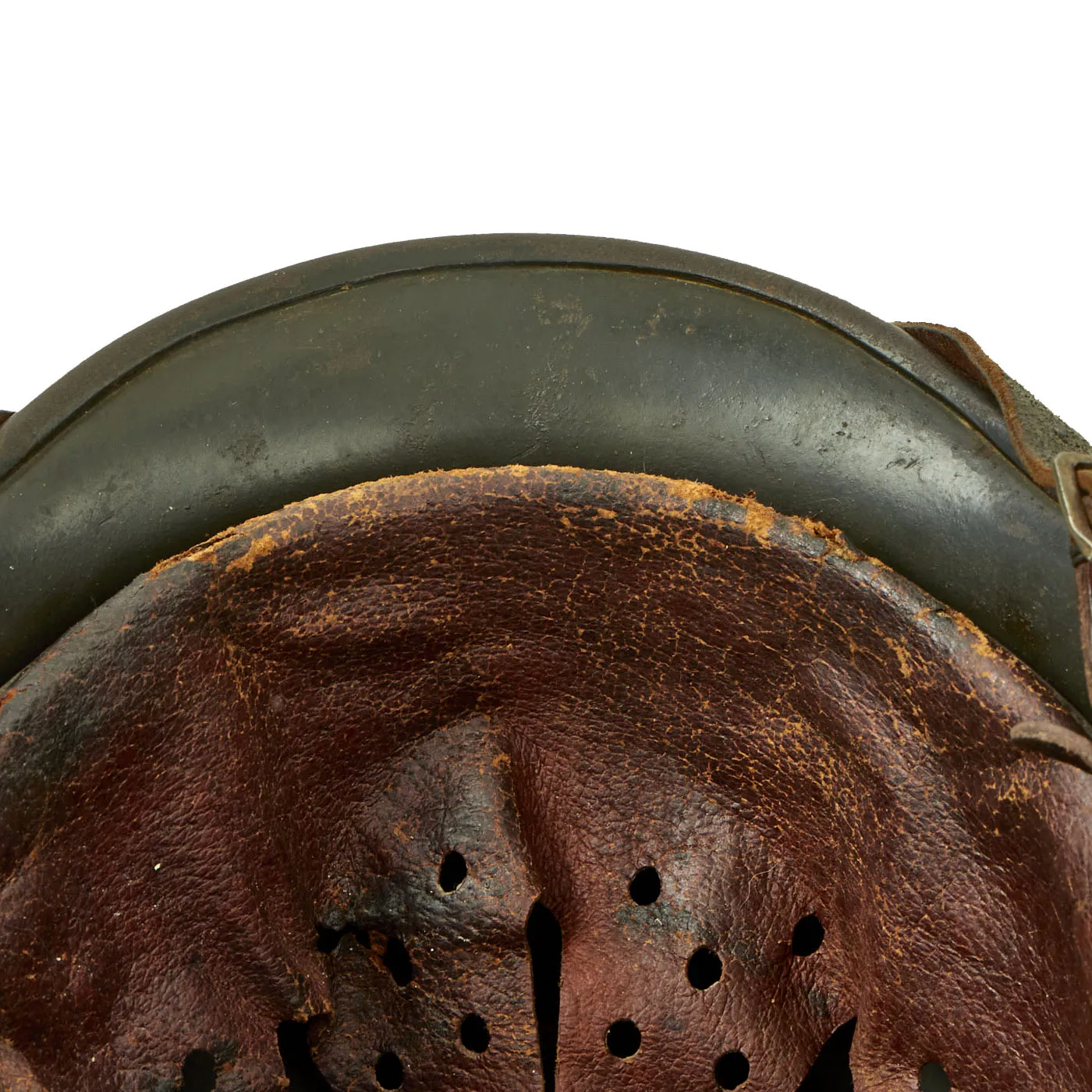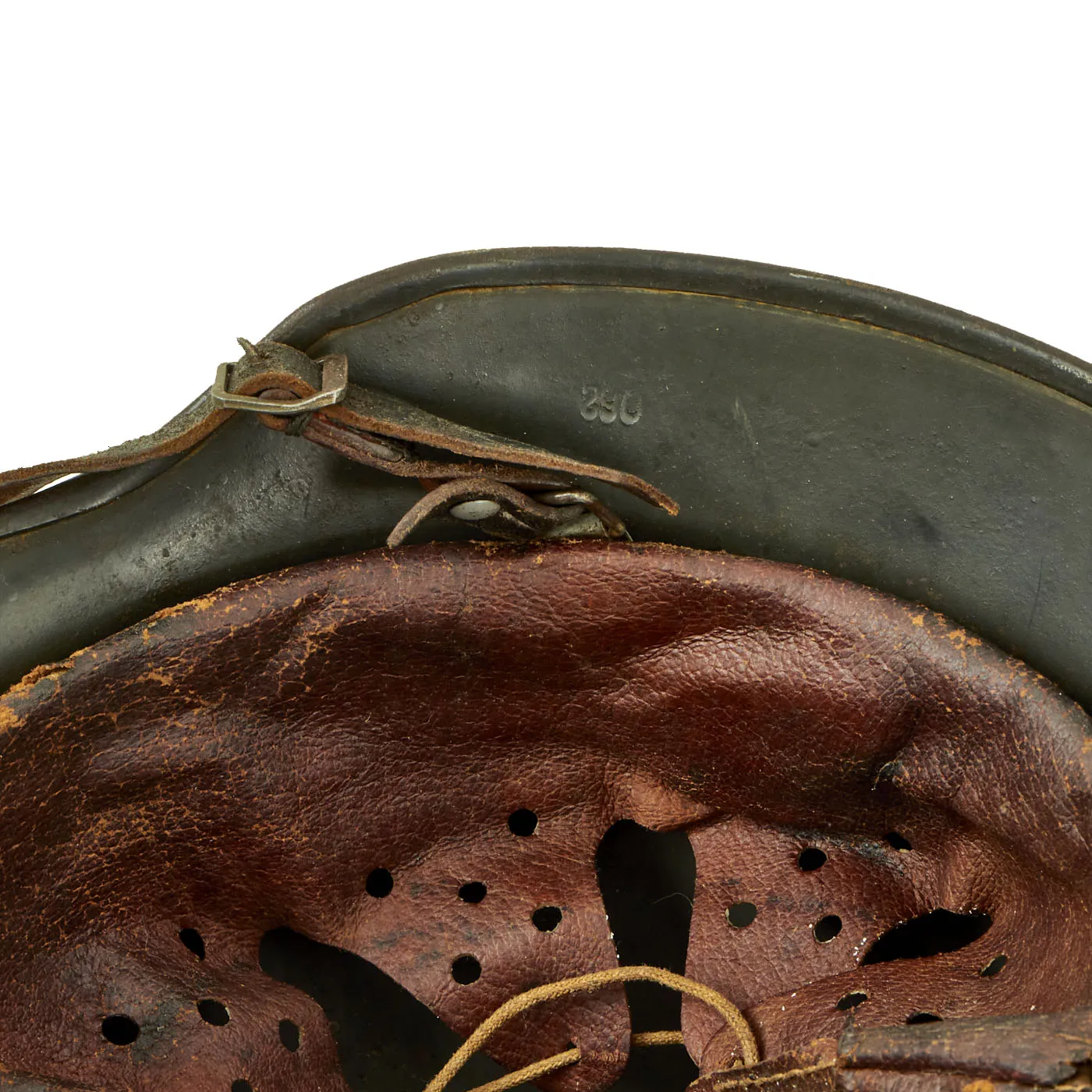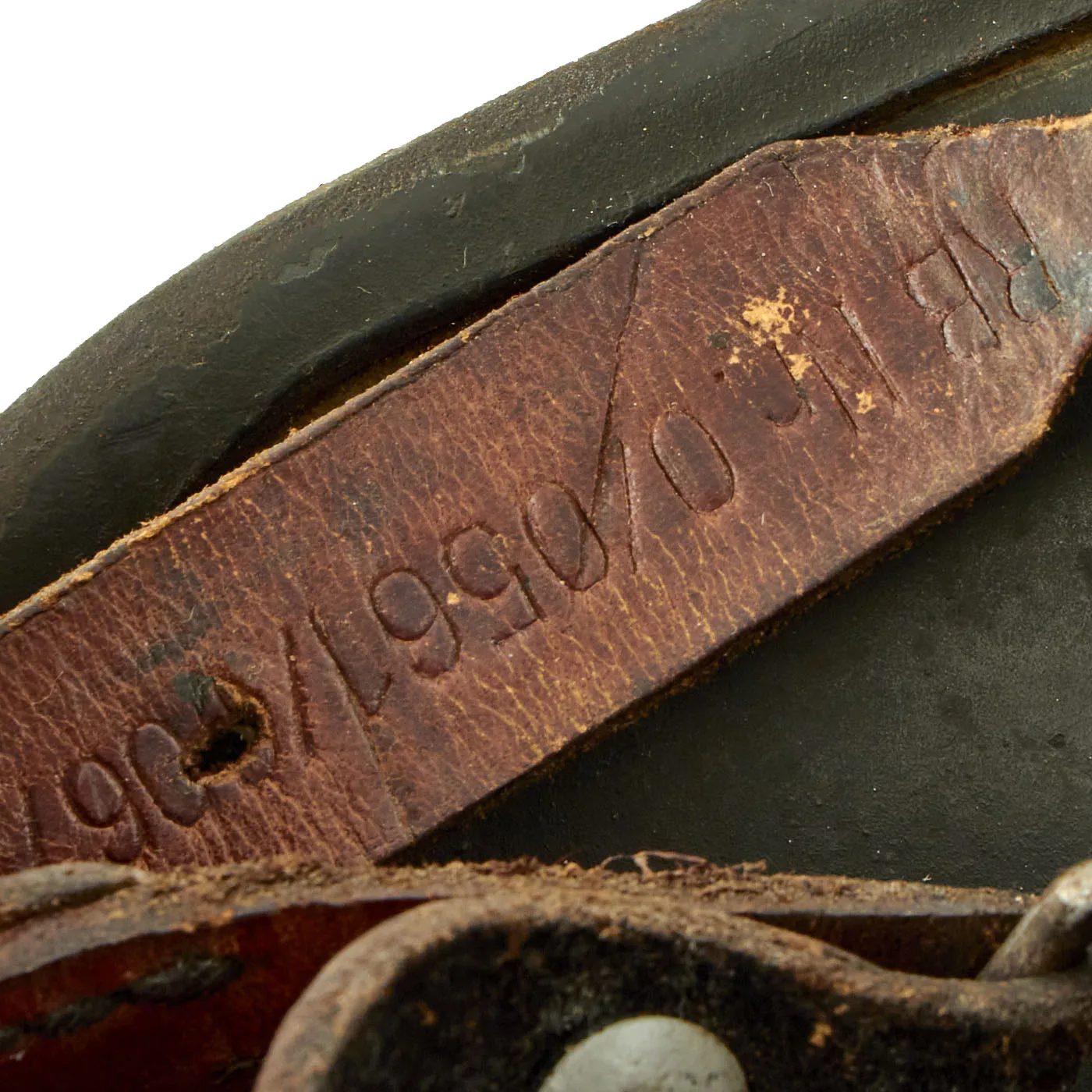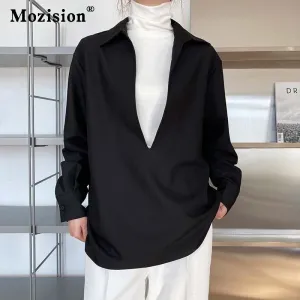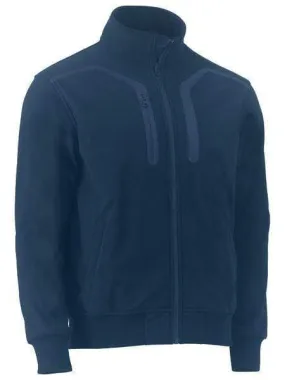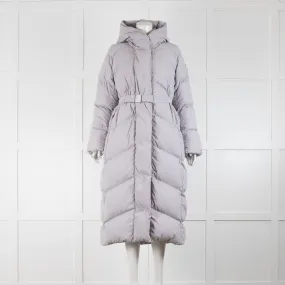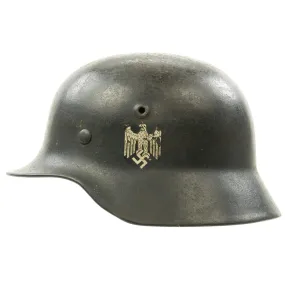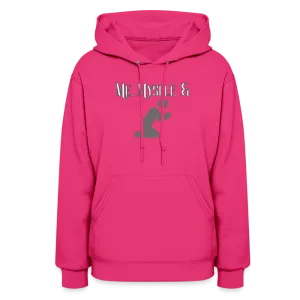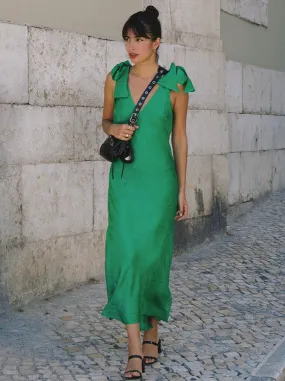Original Item: Only One Available. This is a very nice all original example of a German WWII M40 helmet, issued to the Heer (Army). This stamped sheet steel construction helmet looks to have been in service for some time, and had the shell field repainted at some point, which is why it has somewhat of a "pebbled" appearance. After this it saw more service, and the crown area of the helmet has had areas of the second coat wear away, showing the original paint as well as some areas of oxidation where the paint is completely gone.
The left side of the helmet features a Heer eagle decal, which is retained about 90%, showing light overall wear. However this is almost certainly a decal applied as part of the repaint, and not the original one. This is a helmet with loads of history!
The reverse, interior, neck guard apron is batch number stamped DN255, and the interior, left side, apron has a stamped manufacturer's code and size, Q62. This indicates it was manufactured by Quist in Esslingen, Germany in size 62. Size 62 is a nice smaller size that can accommodate liners from 54cm to 55cm or US 6 3/4 to 6 5/8.
All three liner retaining pins are intact, and still have most of the original paint still present. The interior of the helmet still has the original M31 leather liner with all eight of its fingers intact. The leather is however dark and shows deterioration and some tearing, making it relatively delicate. The top tie string is present, but some of the leather washers have detached from the "fingers" and are loose on the string. The side of the galvanized steel liner band is marked 62 n.A. / 55, indicating that this is a size 55 liner for a size 62 shell. The right side displays the full manufacture information, as well as a date:
B. & C.
LITZMANNSTADT
1942
This liner was made by Biedermann & Czarnikow, a German company who moved operations to Łódź in occupied Poland to take advantage of the slave labor in the ghetto located there. NSDAP authorities renamed Łódź to Litzmannstadt in honor of the German General Karl Litzmann who had captured the city in the previous World War.
The chinstrap is present, but in VERY delicate condition, almost torn through close to where the longer part attaches to the helmet. The leather has dry rotted, and it is "hanging on by a thread", so we cannot guarantee that it will survive shipment. The end of the longer portion is maker marked with RB Nr. 0/0561/0067.
Overall a very nice 100% genuine M40 Single Decal Heer Army helmet, with a great service worn look! M40 helmets of this quality are always the hard to find on the market. This is an item that will only continue to appreciate in value over time.
The first "modern" steel helmets were introduced by the French army in early 1915 and were shortly followed by the British army later that year. With plans on the drawing board, experimental helmets in the field, ("Gaede" helmet), and some captured French and British helmets the German army began tests for their own steel helmet at the Kummersdorf Proving Grounds in November, and in the field in December 1915. An acceptable pattern was developed and approved and production began at Eisen-und Hüttenwerke, AG Thale/Harz, (Iron and Foundry Works), in the spring of 1916.
These first modern M16 helmets evolved into the M18 helmets by the end of WWI. The M16 and M18 helmets remained in usage through-out the Weimar Reichswehr, (National Defence Force, Circa 1919-1933), era and on into the early years of the Third Reich until the development of the smaller, lighter M35 style helmet in June 1935.
In 1934 tests began on an improved Stahlhelm, whose design was a development of World War I models. The Eisenhüttenwerke company of Thale carried out prototype design and testing, with Dr. Friedrich Schwerd once again taking a hand.
The new helmet was pressed from sheets of molybdenum steel in several stages. The size of the flared visor and skirt was reduced, and the large projecting lugs for the obsolete armor shield were eliminated. The ventilator holes were retained, but were set in smaller hollow rivets mounted to the helmet's shell. The edges of the shell were rolled over, creating a smooth edge along the helmet. Finally, a completely new leather suspension, or liner, was incorporated that greatly improved the helmet's safety, adjustability, and comfort for each wearer. These improvements made the new M1935 helmet lighter, more compact, and more comfortable to wear than the previous designs.
The Army's Supreme Command officially accepted the new helmet on June 25, 1935 and it was intended to replace all other helmets in service.
More than 1 million M1935 helmets were manufactured in the first two years after its introduction, and millions more were produced until 1940 when the basic design and production methods were changed, replacing the multi-piece riveted vent with one stamped directly into the steel. Later, in 1942 the rolled steel rim was removed from the pattern to further expedite production.




